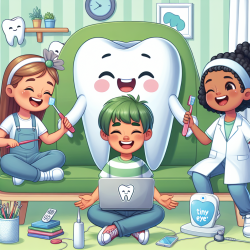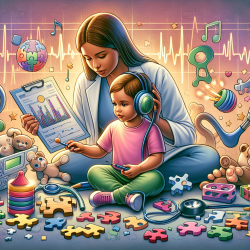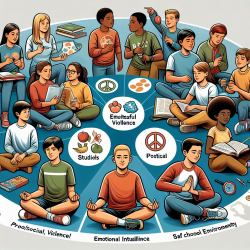As an online therapy provider at TinyEYE, we’re always on the lookout for new insights that can help us better serve our young clients. A recent research paper titled Classifying Children’s Behaviour at the Dentist—What about ‘Burnout’? offers some thought-provoking ideas on how children can experience burnout, especially during prolonged dental treatments. Let’s explore how you can apply these findings to improve your practice and encourage further research in this area.
Recognizing Dental Burnout in Children
Dental burnout in children is a relatively new concept, suggesting that children who show signs of non-cooperation or resistance during dental treatments might actually be experiencing burnout. Traditional views label these behaviors as non-compliance, but understanding them as burnout can lead to better management strategies.
Signs and Symptoms
Here are some signs that may indicate a child is experiencing dental burnout:
- Loss of care and motivation: The child may become less communicative and lose enthusiasm.
- Avoidance behaviors: The child may try to avoid dental appointments altogether.
- Worry, anxiety, and fear: Increased anxiety and fear can manifest as physical symptoms like stomach aches or shaking.
- Attitude shift: A previously positive child may become negative and less tolerant of minor setbacks.
- Concentration issues: The child may find it hard to concentrate and become easily frustrated.
Strategies for Minimizing and Managing Dental Burnout
To help prevent and manage dental burnout, consider implementing the following strategies:
1. Thorough History Taking
Understanding a child’s dental, social, and medical history can provide valuable insights into their behavior and potential for burnout. Use a relaxed personal interview to explore these aspects.
2. Effective Communication
All behavior is a form of communication. When a child seems less cooperative, they might be trying to communicate that something is wrong. De-escalate the situation calmly and maintain honest communication throughout the treatment process.
3. Emotional Exchanges
Think of each dental visit as an emotional exchange. Positive experiences can recharge a child’s ‘resilience battery,’ while negative ones can deplete it. Micro-breaks during extended treatment phases can help prevent burnout.
4. Continuity of Care
Treatment by the same clinician helps build a trusting relationship, which is crucial for moderating negative experiences and preventing burnout.
5. Cooperation vs. Compliance
Focus on cooperation rather than compliance. Cooperation builds a positive patient-dentist relationship, while compliance can lead to negative outcomes if disagreements arise.
6. Behavior Management Spectrum
Use functional inquiries to gain insights into a child’s cooperative ability and tailor behavior management techniques accordingly. Cognitive behavioral therapy (CBT) can be particularly effective in managing anxiety and building resilience.
Encouraging Further Research
While the concept of dental burnout in children is still new and requires further empirical validation, it offers a promising framework for understanding and managing challenging behaviors in pediatric dental patients. By recognizing and addressing dental burnout, we can improve the dental care experience for children and potentially reduce the incidence of burnout in both patients and professionals.
To read the original research paper, please follow this link: Classifying Children’s Behaviour at the Dentist—What about ‘Burnout’?










